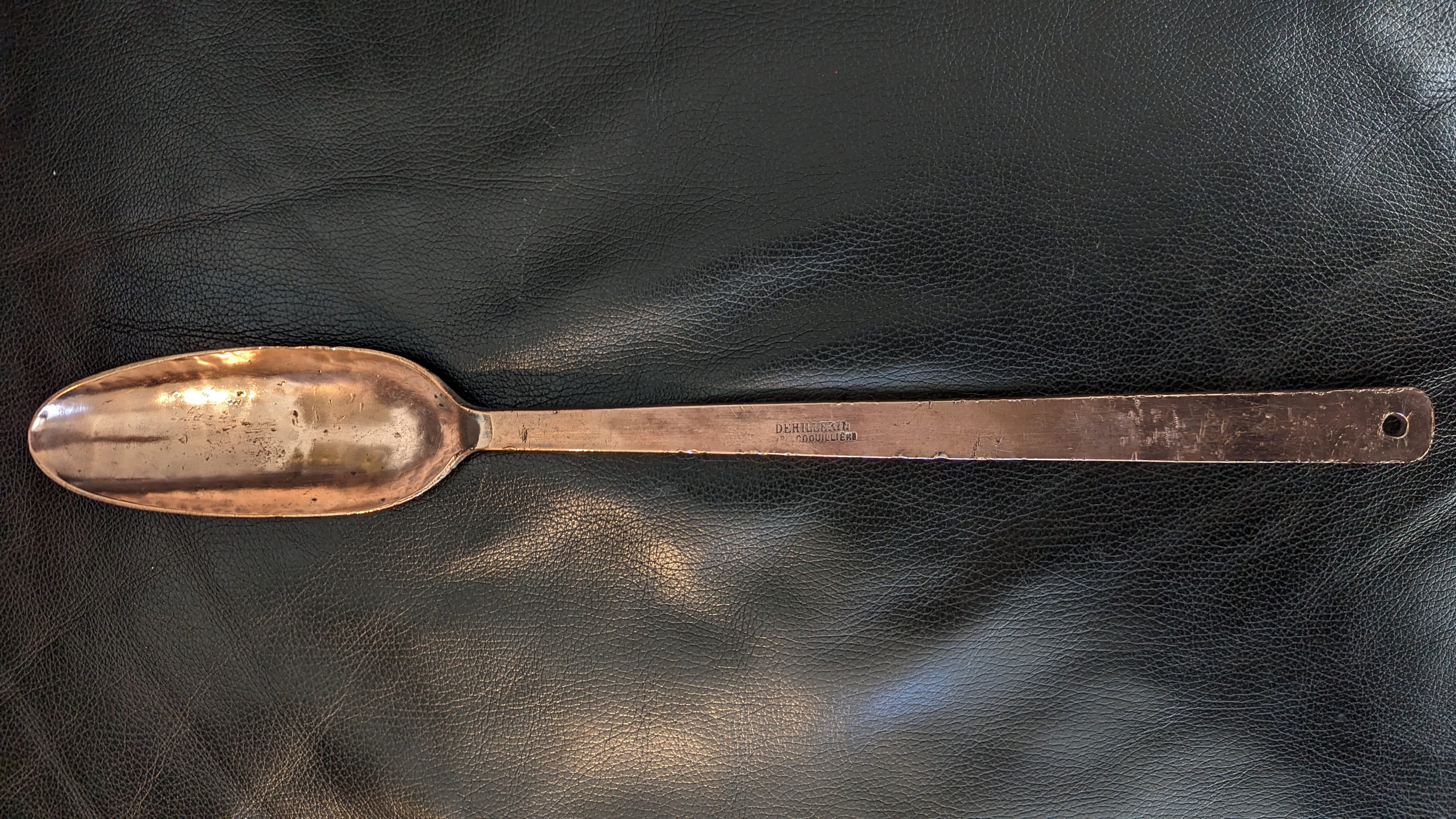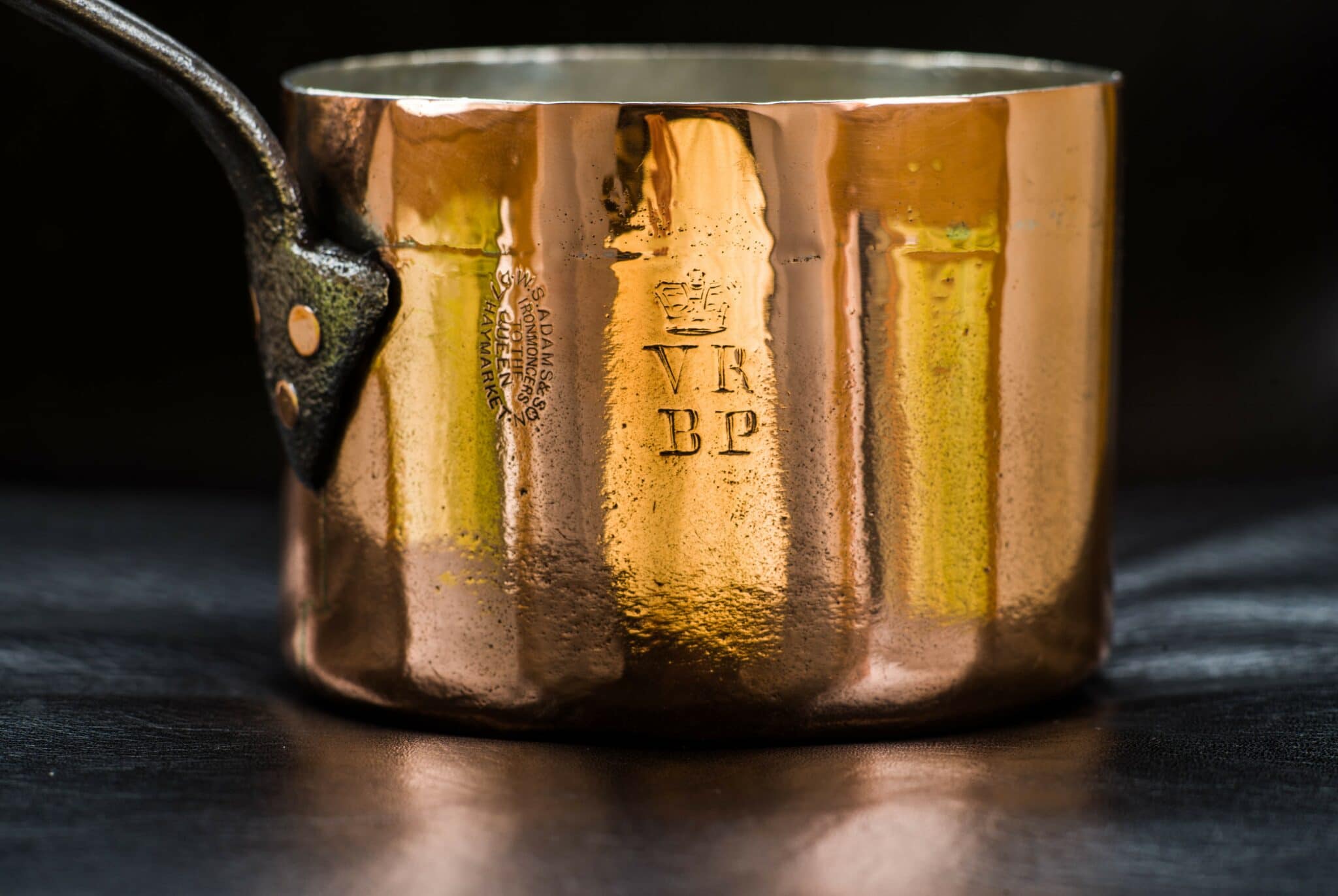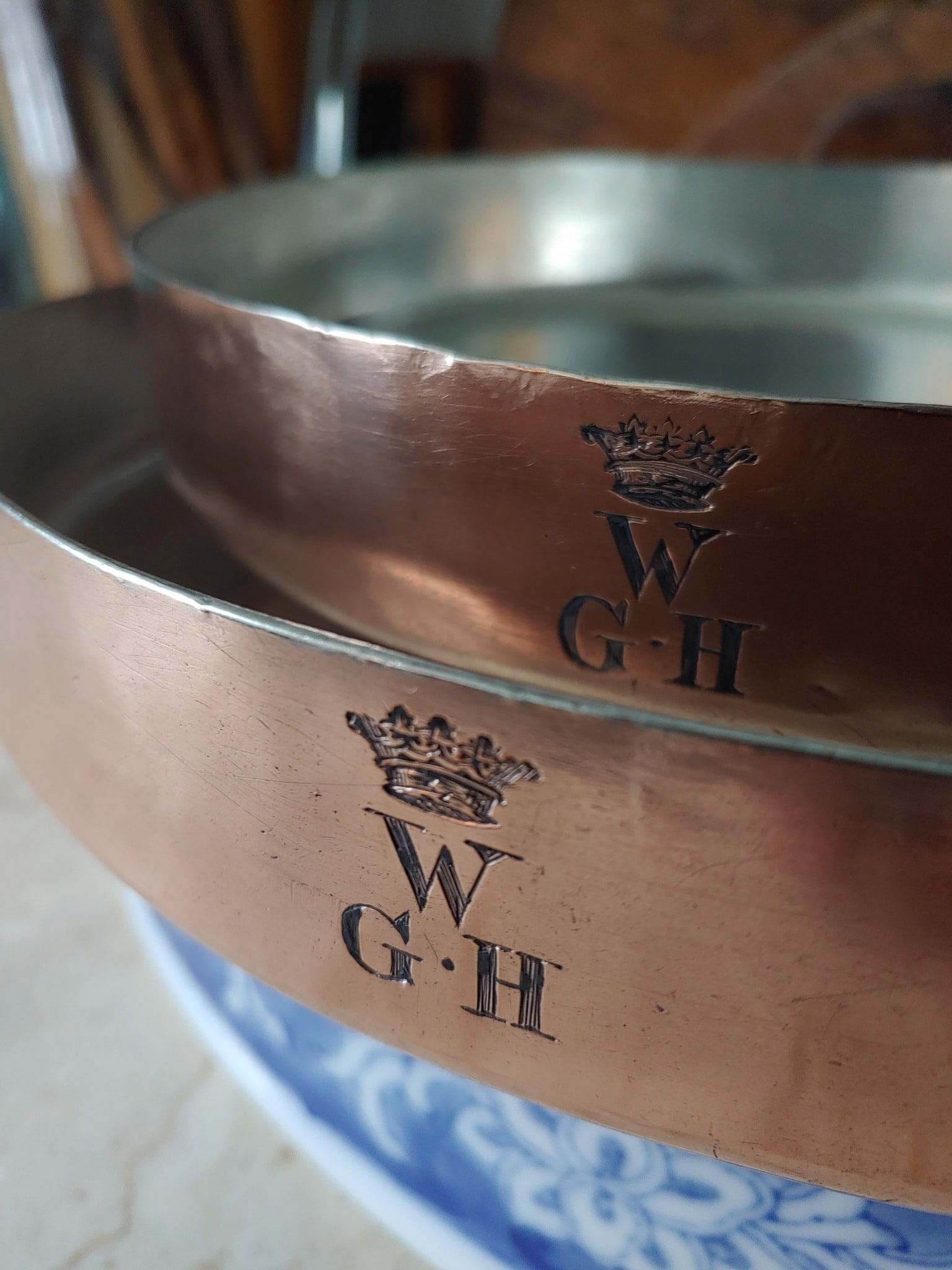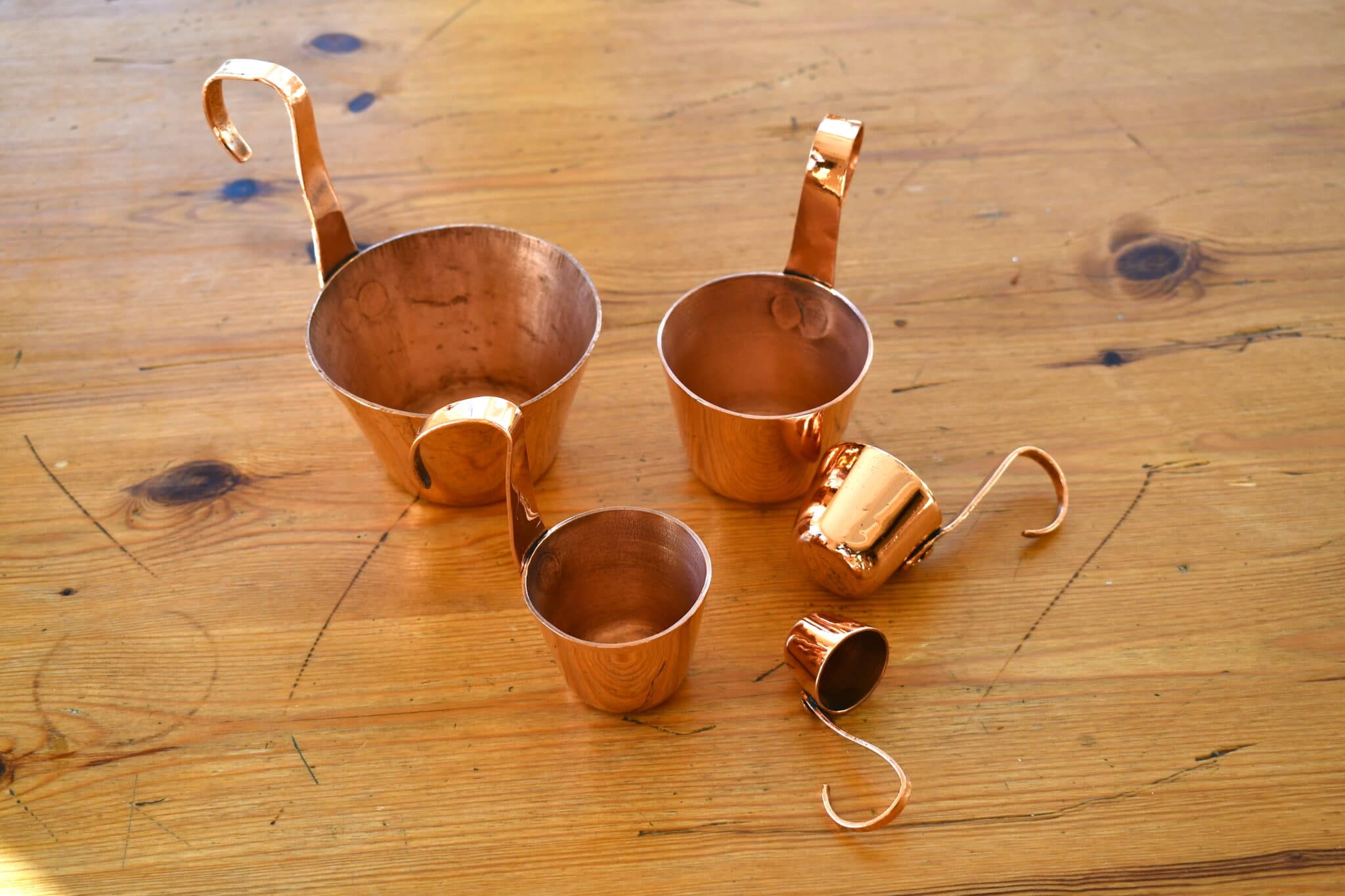These three saucepans represent three generations of French copper craftsmanship and I think it’s worth considering them together.

| Type | Three tin-lined saucepans in hammered finish with iron handles fastened with three copper rivets | ||
| French description | Trois casseroles étamées et martelées avec queues de fer munies avec trois rivets en cuivre | ||
| Dimensions | 28cm diameter by 15cm tall (11 inches by 5.9 inches) |
24cm diameter by 14.5cm tall (9.4 inches by 5.7 inches) |
22cm diameter by 12cm tall (8.7 inches by 4.7 inches) |
| Thickness | 3.8mm | 2.7mm | 3mm |
| Weight | 6014g (13.3lbs) | 3972g (8.8lbs) | 3326g (7.3 lbs) |
| Stampings | E. DEHILLERIN 18 RUE COQUILLIÈRES; “A” | MAUVIEL 1830 FRANCE | E. DEHILLERIN; MADE IN FRANCE |
| Maker and age estimate | Dehillerin; 1880 to 1920s | Mauviel; late 1990s to 2007 | Mauviel; 1970s to 1990s |
| Source | lazylou2002 | Harestew | Harestew |
These three pans were made during different eras in French coppermaking and showcase the evolution of craftsmanship.
The oldest of the three is the 28cm diameter saucepan. It has been beautifully restored by East Coast Tinning — I have two “before” photos to give you an idea of what it looked like. It was in good shape but the tin lining needed to be redone and Jim did a great job with it.
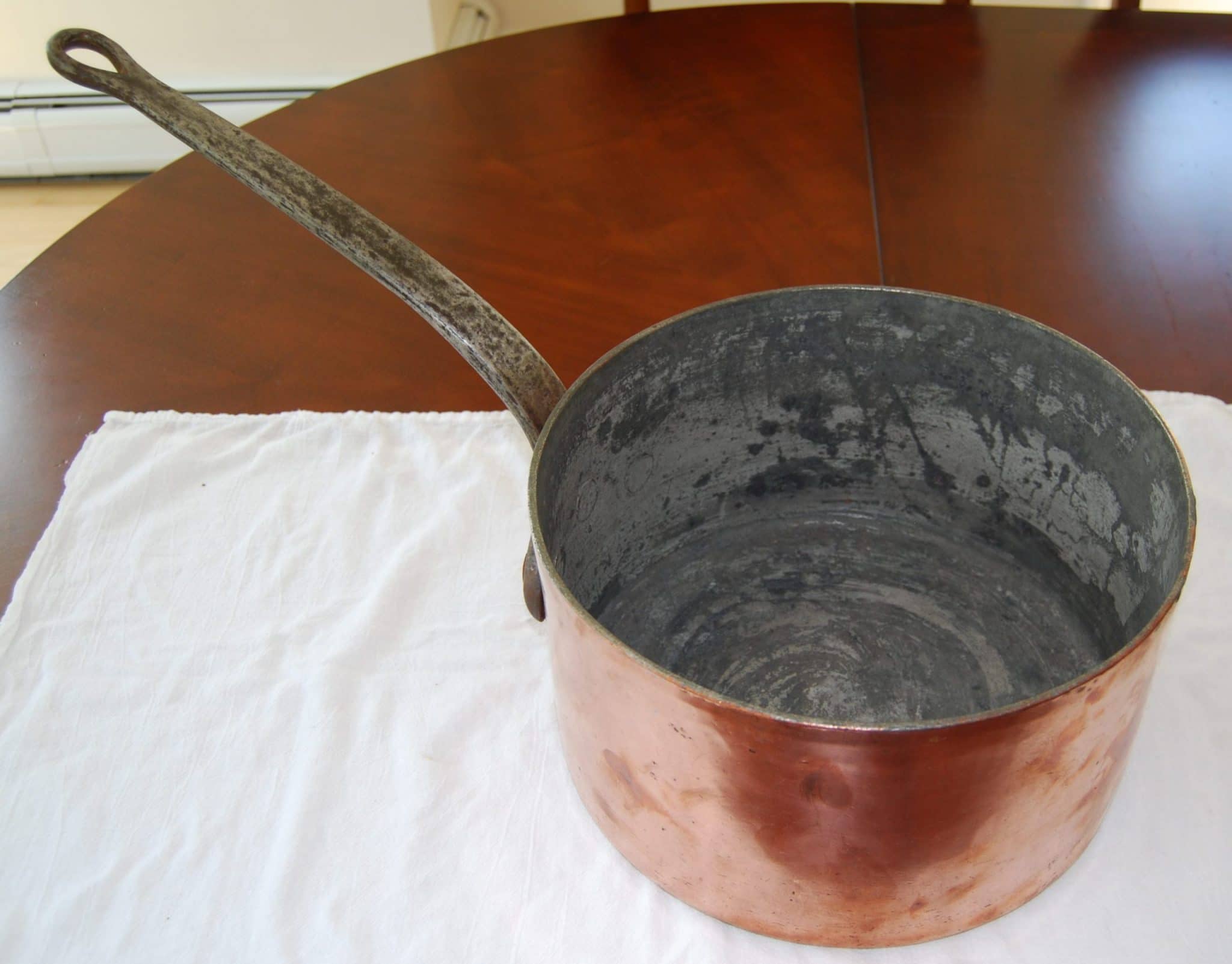


This pot shows French manufacturing techniques from the early 20th century (and possibly late 19th century). It carries an early version of the E. Dehillerin stamp, which I believe indicates that it was made by Dehillerin prior to World War II and likely closer to the early 1900s. The rivets are large and show hammer strike marks, indicating that they were hand-inserted and finished without the use of a riveting machine.
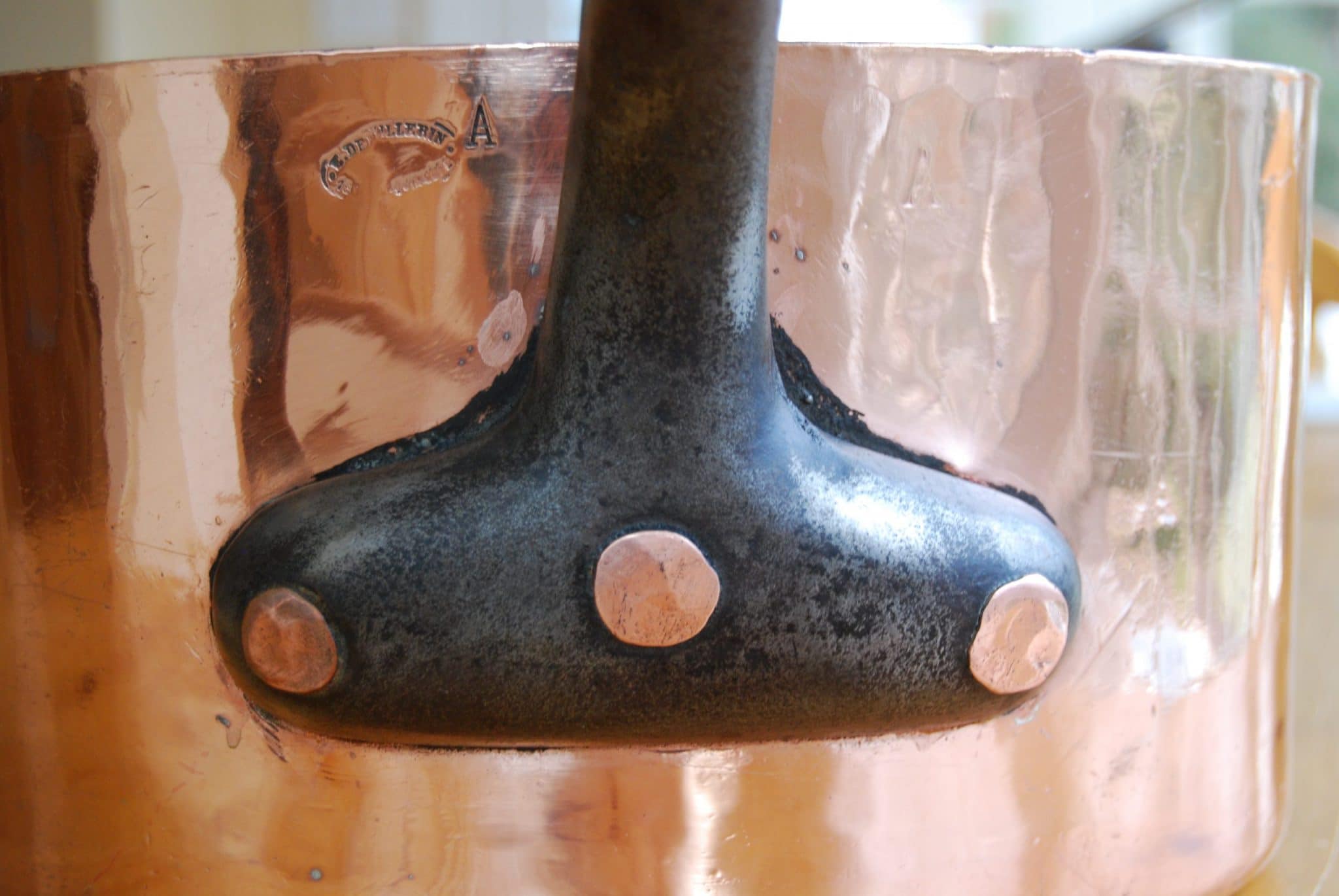
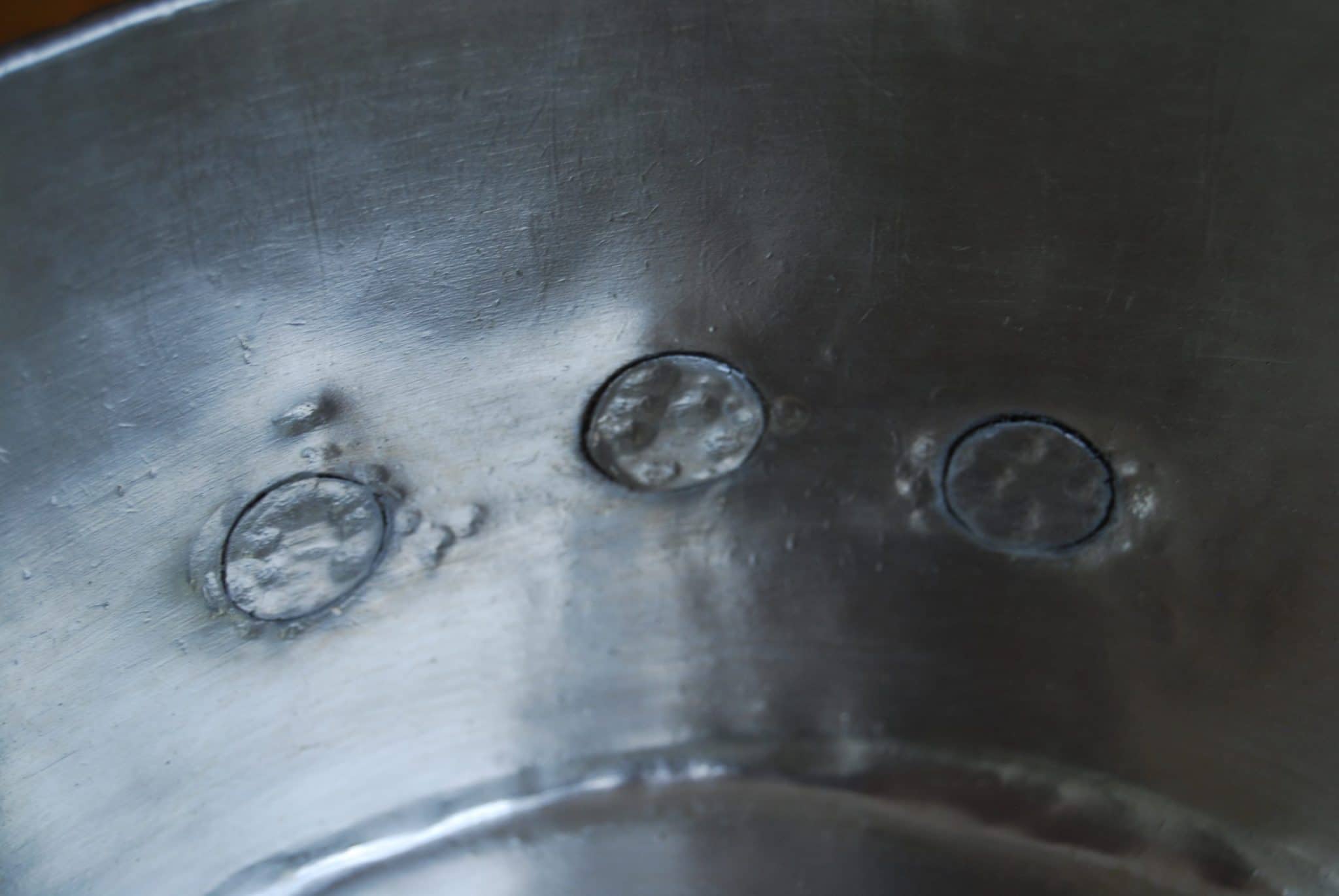

Like many older pots of this era, it carries some scars from a century of use. The copper is thick at 3.8mm and the internal dings don’t bother me, and I find the external patina to be lovely.
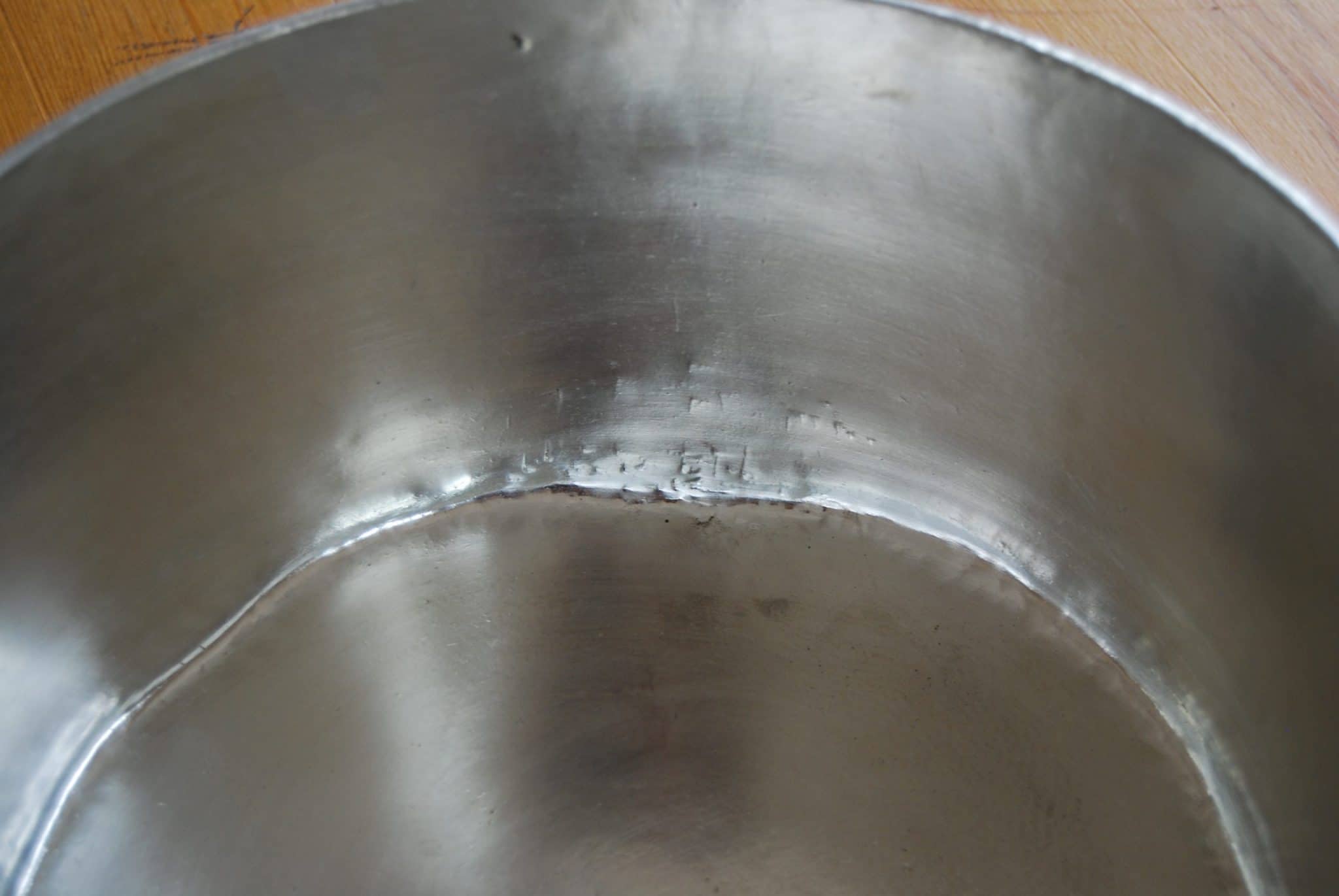

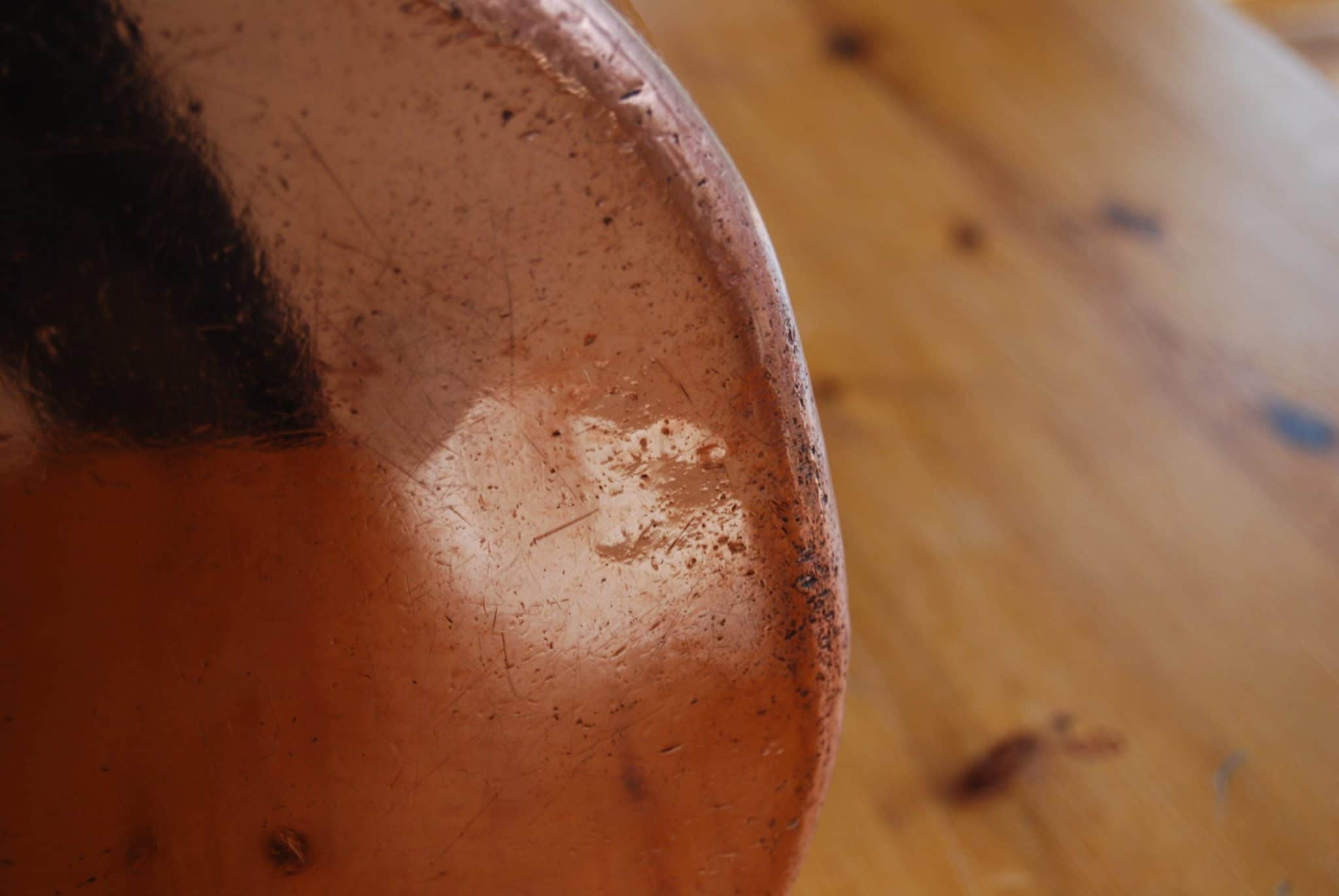
Chronologically, the next saucepan is the smallest of the three, the 22cm diameter pan.

I believe this lovely 3mm pan is an example of Mauviel’s extra thick series of tin-lined hammered-finish Cupretam pans from the 1970s to the 1990s. These are marvelous pans. Mauviel ramped up its operations in Villedieu in the early 1960s when Chuck Williams negotiated the first supply contracts for French copper for his store in Sonoma, and the fit and finish on pieces of this era are fantastic.
This particular pan is not one of those shipped off to Williams-Sonoma. Rather, Mauviel sent this one to the Dehillerin store in Paris, as it carries an oval E. Dehillerin Paris stamp of the post-war, early modern era. The handle and rivets are machine-made and machine-riveted with smooth factory and shop heads.

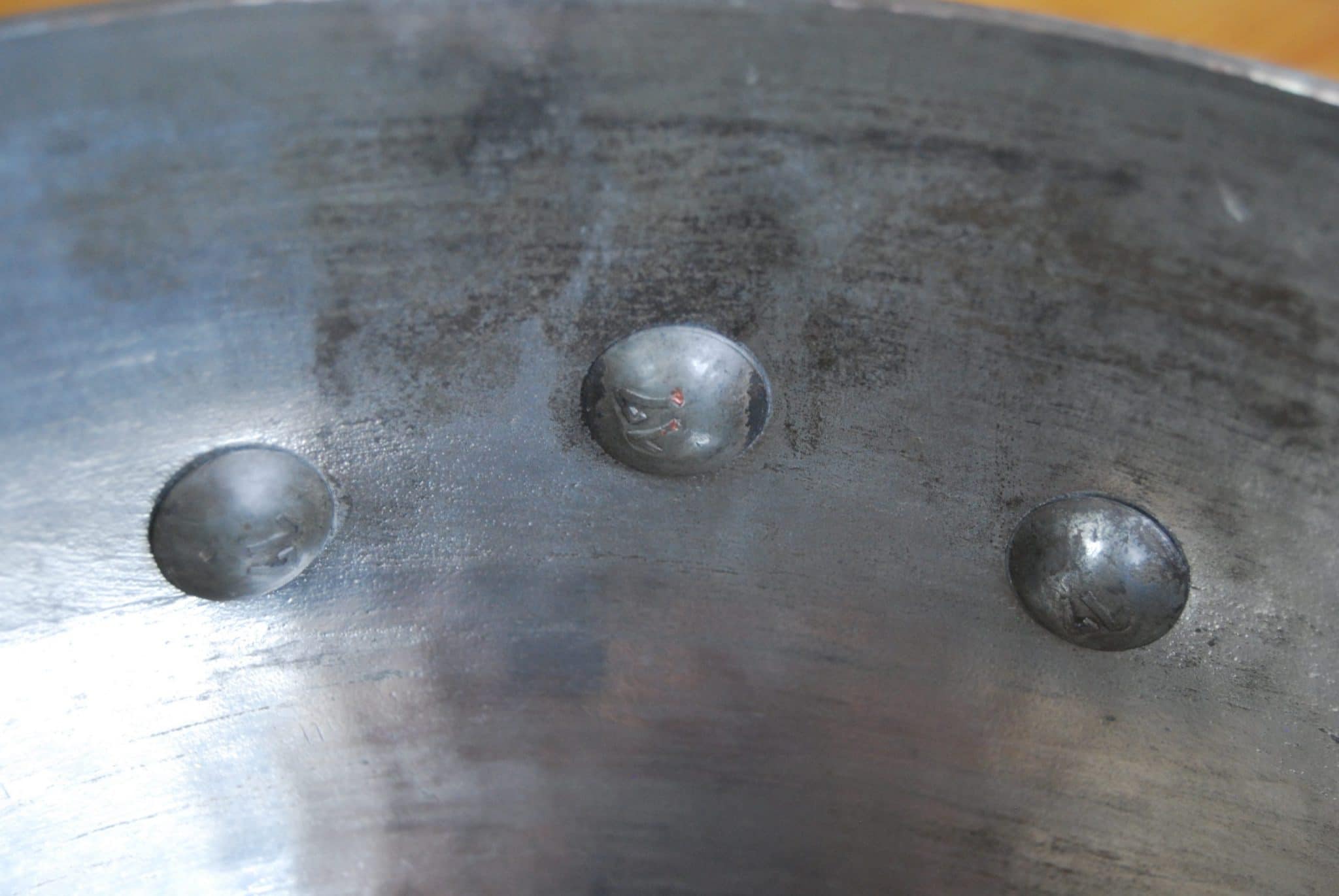
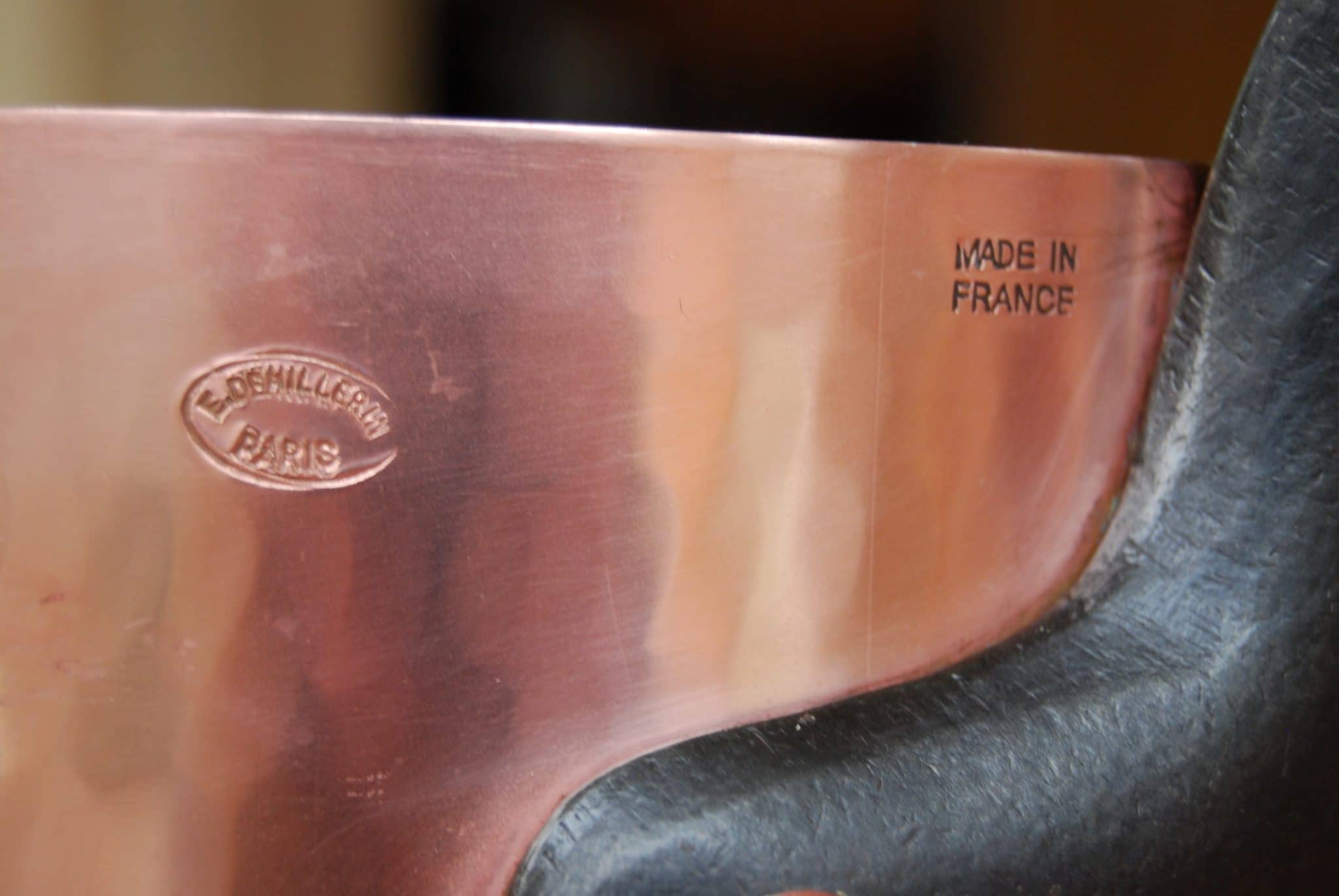
What’s particularly lovely and unusual about this pan is that I believe it has its original Mauviel factory lining. I see these occasionally on new-old-stock pots, and I am here to tell you that tin in this condition is wonderful to cook with. It’s old, to be sure — the gray swipe marks are likely oxidized tin, a sign of a lining that has been in place for a while. But tin in this condition is at the perfect thickness and hardness and offers the best low-stick experience I know.
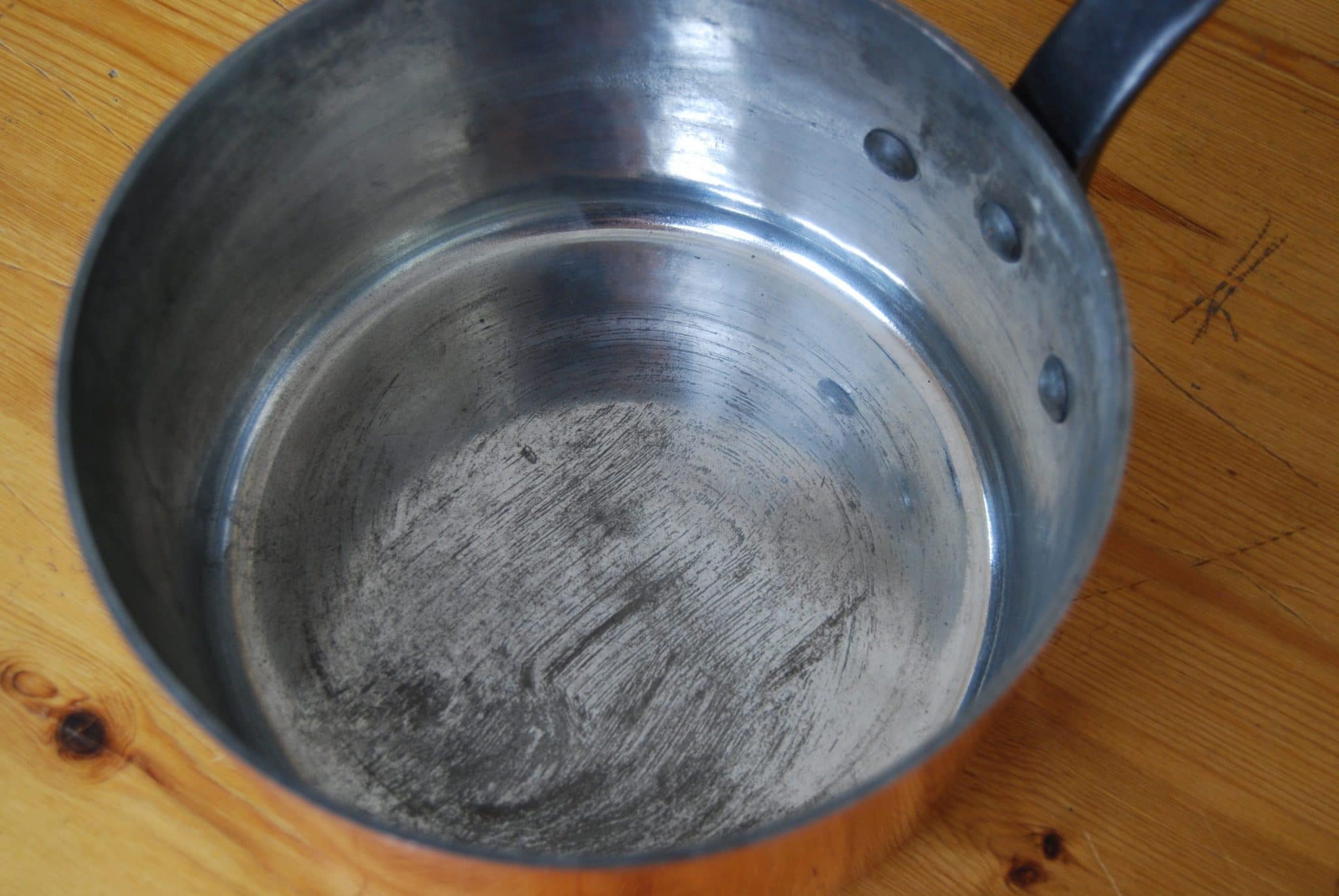

The third and youngest of these pans is the 24cm.

In terms of craftsmanship, this pan is virtually identical to the 22cm: the finish, the handle, and the rivets are just the same. The big difference between this pan and the 22cm is the stamp: “Mauviel France.” I believe this stamp is an early example of Mauviel putting its own name on its pots. The typeface, including the italicized “e”, is identical to Mauviel logo branding on Cupretam (tin-lined) and Cuprinox (stainless steel lined) product lines in the 1980s and 1990s. This is why I estimate this pot to be from the late 1990s to 2007 or so, when Mauviel’s branding strategy shifted to its current “Mauviel 1830” designation.


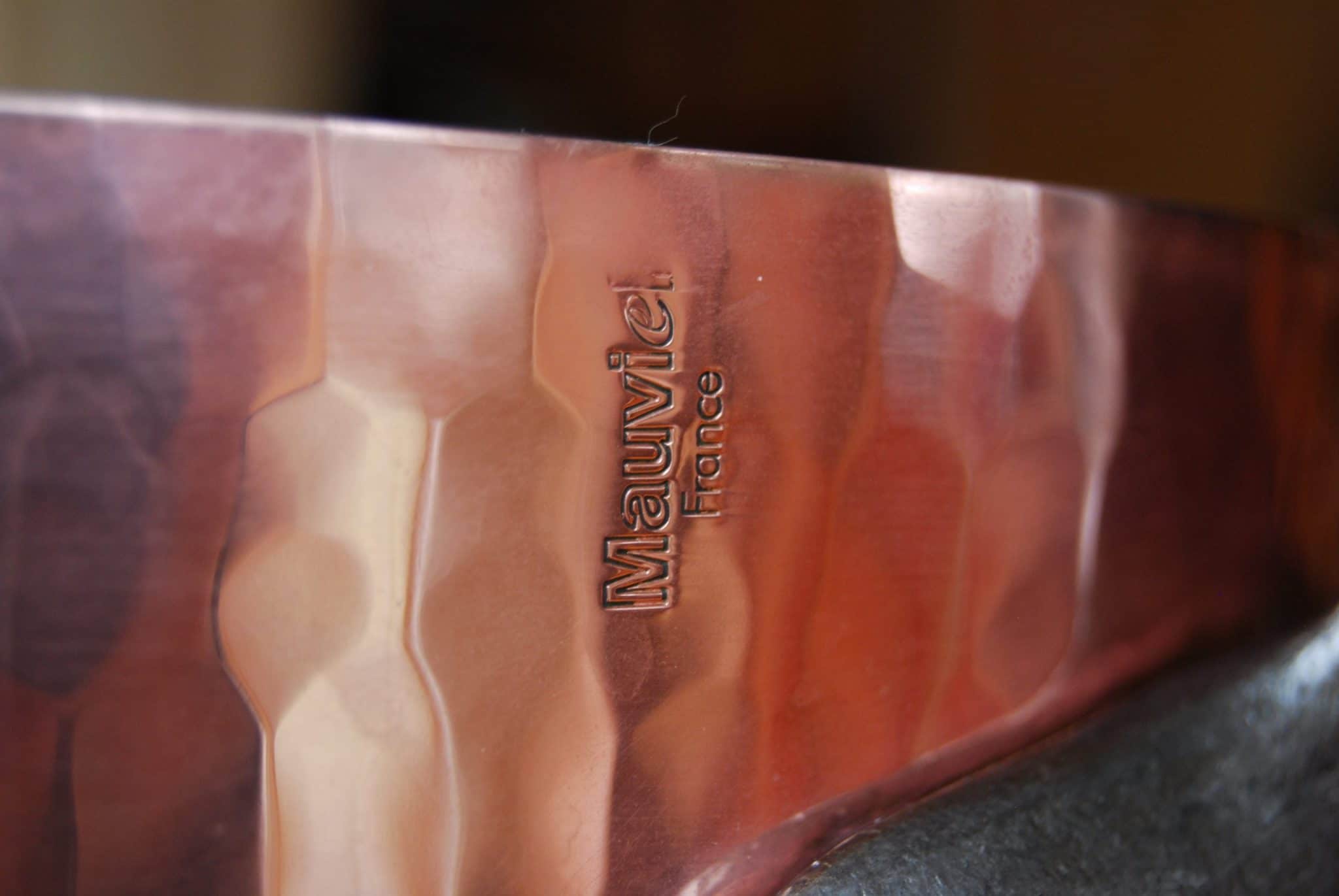
Mauviel pots from the 1970s to the 2000s can be difficult to distinguish and I’d like to offer a few details that can help.
Handle spacing
Through the 1960s and 1970s, Mauviel used a handle design that rose up close to the body of the pan before curving away. This design does not leave much space for the lip of a lid and seems to be intended for lollipop drop-in or universal style lids. Mauviel seems to have realized this does not work with round top-handle lids with wider lips, and in the 1980s changed its handle design to leave more space for a lid.
These 22cm and 24cm pan handles show this transition. The earlier 22cm handle is set close to the body of the pot, while the later 24cm handle leaves more space for the rim of a lid.


Polish on base
A second design change was the polish of the base. The earlier design on the 22cm pot has a mirror-finish base. Towards the 2000s, Mauviel began to put a brush polish on the base, like the brushed finish on some stainless steel. If you see a Mauviel pot with a brushed base, it’s a later design.

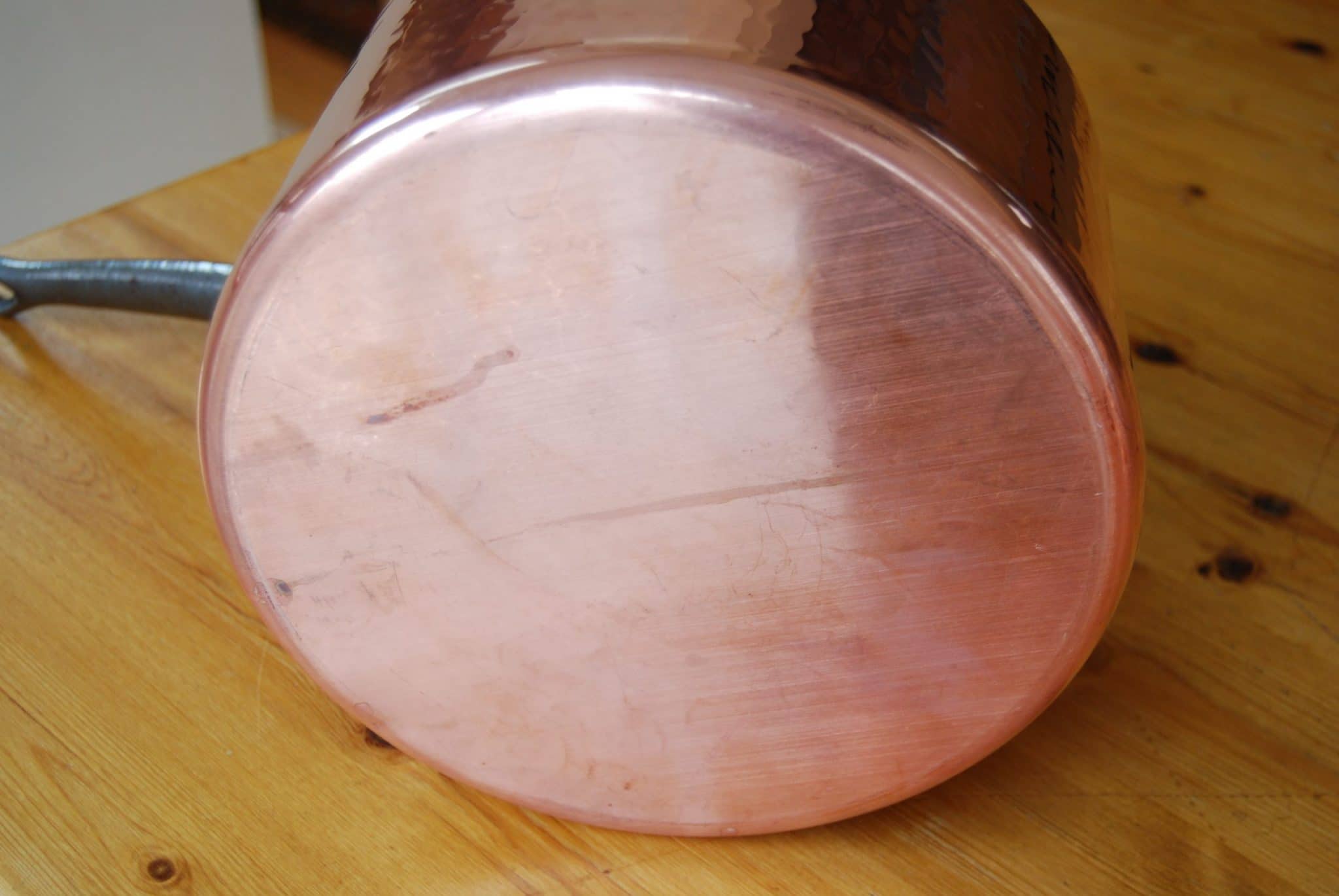
There’s been some debate about why this change was made. The bottom of a pot takes some abuse from stovetop and storage, of course, and a mirror finish can highlight these flaws as they occur, while they’d be less noticeable on a brushed finish. But a second argument for brushed-finish base is that it may more efficiently absorb thermal energy, particularly from halogen heat sources; the mirror finish reflects both visible and infrared light waves, while the brushed finish better absorbs that energy. I am not a scientist but I believe it’s possible Mauviel made this change in recognition of the prevalence of electric heat sources in modern kitchens.
I just love these pots. Saucepans don’t get a lot of attention in the kitchen — they’re round, they have handles, they nest together (ideally)… These three show how useful this design has been for more than a hundred years, with only a few minor tweaks to adapt to the modern era. Seeing them together makes me appreciate them more and I hope you’ve enjoyed them and learned something, too.

